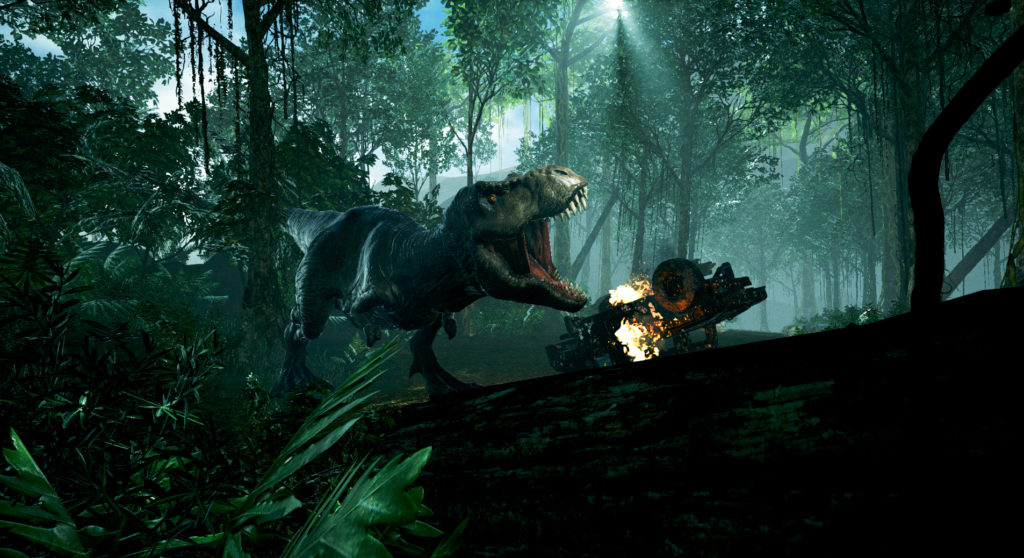Hennessy is taking a substantial swig back into the Unites States market with a dynamic interactive experience in “Harmony. Mastered from Chaos.”
The spirit maker is banking on a stateside integrated marketing strategy—specifically for Hennessy V.S.O.P Privilège—that’s designed to cater to cognac connoisseurs by communicating the company’s rich history in craftsmanship.
The creative multidimensional campaign, V.S.O.P Privilège’s first in the US over the last 10 years, brings to life the spirit’s complex variables and brand’s distinctive blend. The cinematic journey uses 3D lidar scanning, depth capture and binaural recording and merges with live-action footage to capture the cognac-making process. The interactive digital experience— narrated by 2016 Tony-Award winner Leslie Odom Jr.—adds another chapter to the legacy luxury brand’s “Never stop. Never settle.” platform. It continues the strong push Hennessy has been having in 2016 for its overall brand, which also includes “Each Drop of Hennessy X.O is an Odyssey.”

The French multinational brand hasn’t had a shortage of brand awareness and reaching its sophisticated consumers across the states over the last decade. The likes of Tupac, Snoop Dogg, Tech N9ne, Nas and Swizz Beatz—among a slew of other rappers—have helped Henny to never leave the lexicon of pop culture, as well as brown bottle enthusiasts.
Hennessy was one of four sprits that accounted for more than half of alcohol brand mentions in the songs that mentioned alcohol use in Billboard’s most popular song lists in 2009, 2010 and 2011, according to a 2013 study from the Johns Hopkins Bloomberg School of Public Health.
Nas and Swizz Beatz even turned rapping about the company’s cognac to lucrative endorsement deals for themselves.
Giles Woodyer, Hennessy’s senior vice president, joined [a]listdaily to discuss how the cognac maker is keeping it classy and complex all at the same time with “Harmony. Mastered from Chaos.”
What is the brand promise you’re trying to communicate with the “Harmony. Mastered from Chaos.” campaign?
A history of unwavering quality. Hennessy is an incredibly vibrant brand that has a very loyal following, however, few people know the full story of our history, craftsmanship and family legacy. We have chosen to share this rich heritage through the lens of V.S.O.P Privilège.

After 10 years, why was it important to re-introduce the V.S.O.P Privilège brand to the US audience? How does your US audience differ from the one in Europe?
Hennessy enjoys incredible momentum with our very special cognac in the US market. Hennessy V.S is one of many cognac expressions that we offer and want to introduce people to the full richness of our portfolio. For many, V.S.O.P Privilège is the next step on the journey. V.S.O.P Privilège is an exceptionally well balanced blend that naturally lends itself to a broader base of brown spirits drinkers during a time when we are seeing unprecedented levels of brown spirits consumption. Hennessy is perfectly positioned to be one of the brands that benefits from this renewed interest in the category. In addition, we have seen a resurgence in the interest in classic cocktails and a rise in mixology around the country. At the turn of the last century, cognac was the base spirits of many of the iconic, classic cocktails. V.S.O.P Privilège works extremely well in those classics, such as the sidecar and vieux carré, and is delicious neat or on the rocks.
What’s the relationship between the rich visual language of the film and an interactive site with the heritage of Hennessy? What’s the message you’re trying to get across?
Creating Hennessy cognac is a beautiful experience that starts in the vineyards of Cognac, France and travels to the distillery and to our extensive cellars. We wanted to bring some of this beauty to life for people to experience so we are revealing the story behind the crafting of Hennessy cognac—a story that dates back 250 years. Making cognac requires patience and exceptional skill honed over generations. Our Comité de Dégustation is comprised of a highly skilled group of individuals who have dedicated their lives to making cognac. We want to provide a glimpse into the magic of this world. We cannot do justice to the many elements and stages involved in the cognac making process in a short format film, thus our desire was to create truly immersive chapters so that people could explore each of these stages that is so unique and essential to the art of making an exceptional Cognac.
What does having company pillars like Hennessy’s mysterious Comité de Dégustation (Tasting Committee) allow you to do?
When people think of Hennessy, they often associate the brand with our role in popular culture—the Tasting Committee are a living, breathing embodiment of our savoir faire. We are exceptionally lucky to have a depth and richness to our history and our cognac making process that is the envy of the industry. Sharing the intriguing story of the Hennessy Tasting Committee, its exacting practices and long standing rituals, illustrates the crucial role that over 250 years of tradition and excellence play in mastering this well-structured spirit. Telling this story helps to bring the extraordinary legacy of our brand to life.
How does Hennessy further plan on using social media, content and other storytelling tools to engage in new ways with consumers? What kind of social rollouts can followers expect?
Hennessy uses social media engagement and original content as part of the integrated programming with all of our cognacs. We plan to bring our V.S.O.P Privilège campaign to life on social media via month long stories that convey the essence of “Harmony. Mastered from Chaos.” These compelling stories feature experts, in varying disciplines, who display a high level of mastery in their chosen field. These stories will begin rolling out across all of our social platforms starting in August.

How will you measure success for the “Harmony? Mastered from Chaos.” campaign?
We have created this campaign to engage and educate consumers by offering a glimpse into some of the 250-year-old inner-workings of Hennessy, through a modern and powerful cinematic experience. This campaign will be a success if consumers respond to it and enjoy learning more about cognac, Hennessy and V.S.O.P Privilège.
How does using immersive experiences best position Hennessy’s marketing efforts moving forward? How will Hennessy continue to leverage interactive promotions?
Hennessy will continue to offer immersive experiences, whether virtually or in reality, to surprise and delight our brand fans. We find that consumers of Hennessy embrace the brand as part of their lifestyles and want to engage with our cognacs across many facets of their lives, from enjoying cocktails with friends and attending our events, to sharing across social media. These immersive experiences help to build and strengthen meaningful brand connections which are important to our Hennessy drinkers.
Follow Manouk Akopyan on Twitter @Manouk_Akopyan


![Steve Bowler [left], Jeremy Chapman [right]; Founders of CloudGate Studio](https://www.alistdaily.com/wp-content/uploads/2016/07/Jeremy-Chapman-and-Steve-Bowler.jpg)







